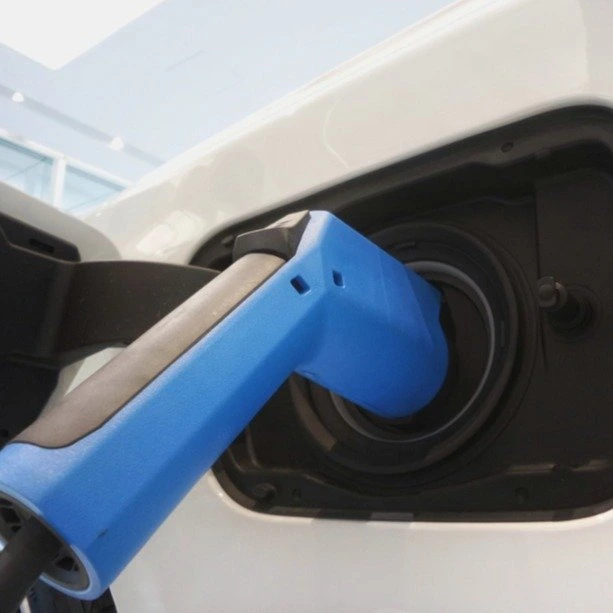What Do Electric Vehicles and Asset Trackers Have in Common?
Manufacturers around the world are focused on increasing battery life of their products – think smart phones and cars for example. The race to create the ultimate battery has been prevalent for decades as consumers and commercial industries have an increased need to access their most favored and used devices.
The electric vehicle (EV) in particular has made some amazing advances in recent years in regards battery life. That said, EVs are not the only ones that need longer-lasting batteries. The need for longer battery life in the world of IoT asset tracking is also rapidly growing.
Everyone wants more visibility and transparency about where their most-valuable assets are at all times. Commercial industries need to track inventory, equipment, vehicles, and more. But they do not want to spend the time replacing the asset tracker batteries every couple of months. This common pain point has been slowing down the adoption of commercial asset tracking systems for years. Perhaps the answer is not creating not just a better battery but an efficient IoT system to regulate the usage of asset tracker batteries.
Now that we’ve discussed how both EVs and asset trackers are aiming toward more efficient battery life, how are they achieving this?
Energy Consumption
As EV owners understand, energy consumption rates are vital to the longevity of the car's battery and time in-between charging. The same is true for asset trackers. Energy consumption during and in-between use is a major source of energy consumption. EV batteries are averaging around 200,000 miles before needing a replacement. That’s about 17 years (or 12,000 miles a year) before needing a replacement battery. How does this translate to asset tracking?
IoT asset tracking systems that use BLE technology have a much longer battery lifespan compared to technologies such as UWB. At Link Labs, we have applied patented technology to our asset tracking platform to decrease energy consumption of standard off-the-shelf BLE tags. Our recent development of XLE® (Xtreme Low Energy) devices enable even greater energy savings than traditional BLE which allows asset tracker batteries to last up to seven years.
Let’s say that the tag you are using has a CR2032 battery. With 2.9 V and 220 mAh, this battery should have a capacity of 510 MWh (assuming an 80% derating), which is enough energy for roughly 500,000 location updates. You might be thinking, how long will the battery last with 500,000 location updates? That depends on how often the tag is used. If your tag sends one location update per day, you will get 5+ years of battery life. So, how is Link Labs able to conserve battery life between tag updates? The time that passes between updates is known as idle mode. This very low idle current (which is around 0.006 ma) can expend quite a bit of the tag’s energy budget. How can we work around this issue?
Limiting Idle Energy Consumption
Imagine if your electric car lost battery life while sitting in your parking lot or at a red light. You would need to completely recharge your battery every day. EVs have nearly eliminated this problem by enabling cars to switch into “shut off” mode while idling to further conserve battery life.
So, how is Link Labs getting around the limitation of idle energy consumption? The key is putting the XLE® tag in on-demand mode. In this mode, the tag location only updates when it gets a notification instructing it to do so from the user interface. This saves battery life in two ways:
- The accelerometer is turned off, removing about 40% of idle current use.
- There are no unnecessary scans triggered by accidental movement. You would be surprised how often this happens. For example, a tool is bumped while on the workbench, or a pallet is shifted a few feet.
Think about tracking a tool in a warehouse. When using on-demand mode, you could get 7 years even with an average update of once per day. This is a significant jump from 5 years. On-demand mode might sound like a straightforward idea but if you compare some of the top asset tracker tags on the market, you will find that almost no one else is pursuing this model.
Does Size Affect Battery Capacity?
One of the factors that affects an EV’s capacity is the size of the battery. The larger the battery, the more potential energy can be used by the car. With cars, battery size isn’t a major issue because they are concealed by the hood. With asset trackers, size matters, and the same principle applies – larger the battery, the longer it lasts.
Perhaps you need to track something several times per day, but still want the battery in the tag to last 7 years. The answer is simple: use a tag with a bigger battery. Maybe you need to track an asset every 5 minutes (288 updates a day). With Link Labs, the tag you are looking for is called the E9. It contains a CR2477 battery and can last seven years at 288 updates per day in on-demand mode. For such a small device, at 58 x 40.6 x 17.5 mm or about the size of a half dollar, this is an impressive amount of updates.
What’s your use case?
No matter the industry, there is an energy-efficient solution available to you for asset tracking, compliance assurance, process efficiencies, and more. If you would like to see how the Link Labs XLE® solution works in real life, book a demo today.




